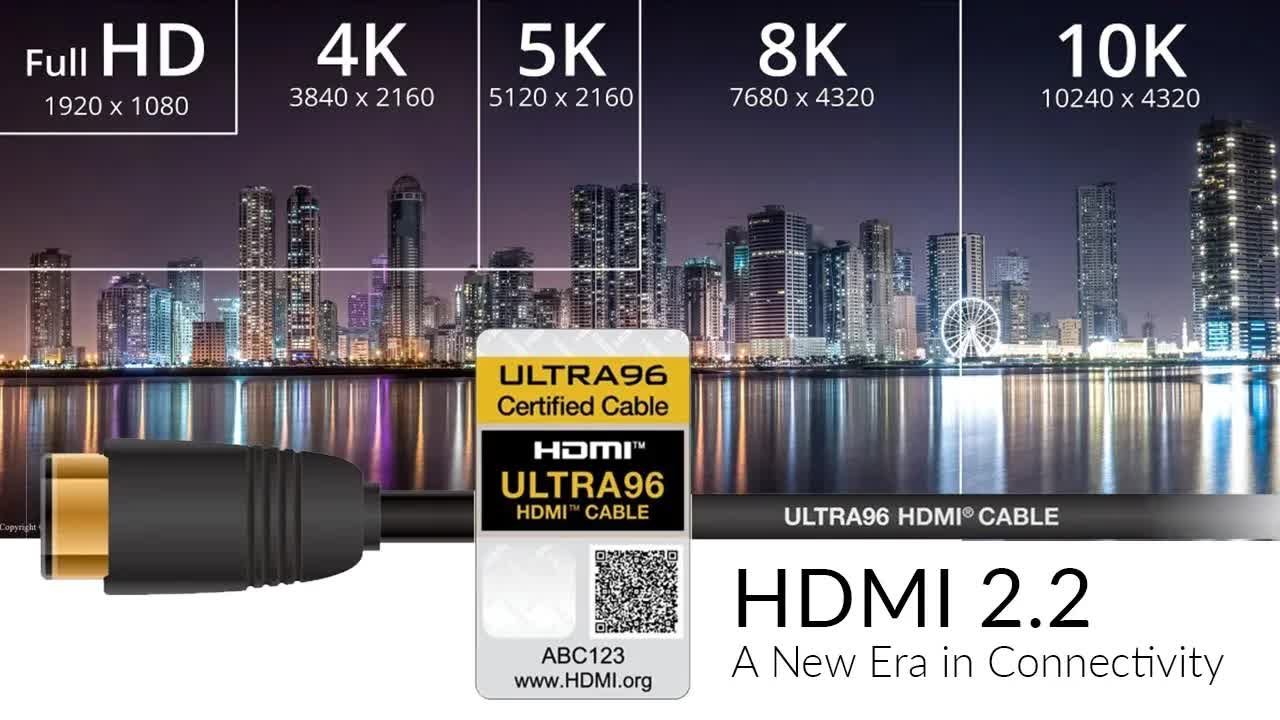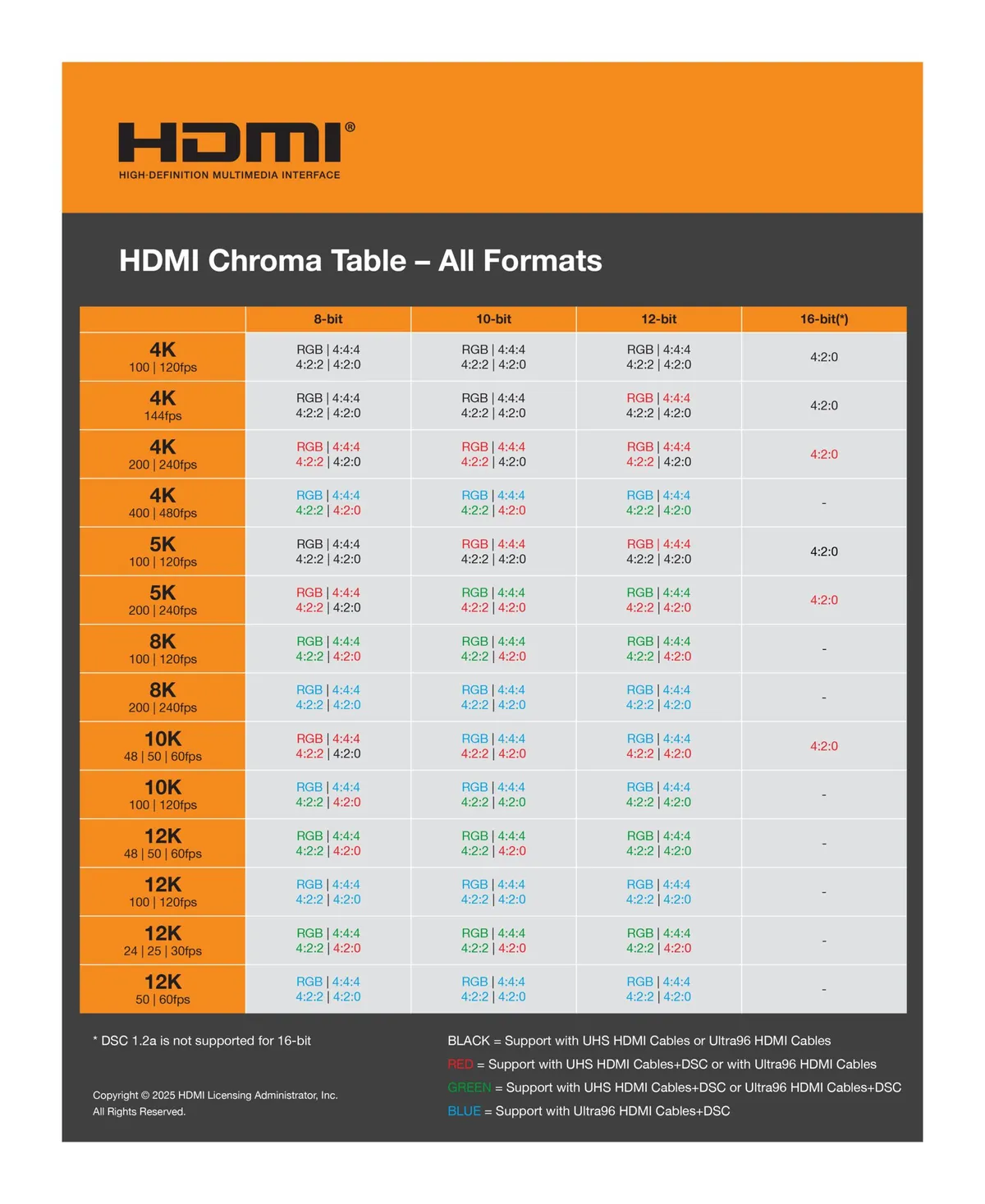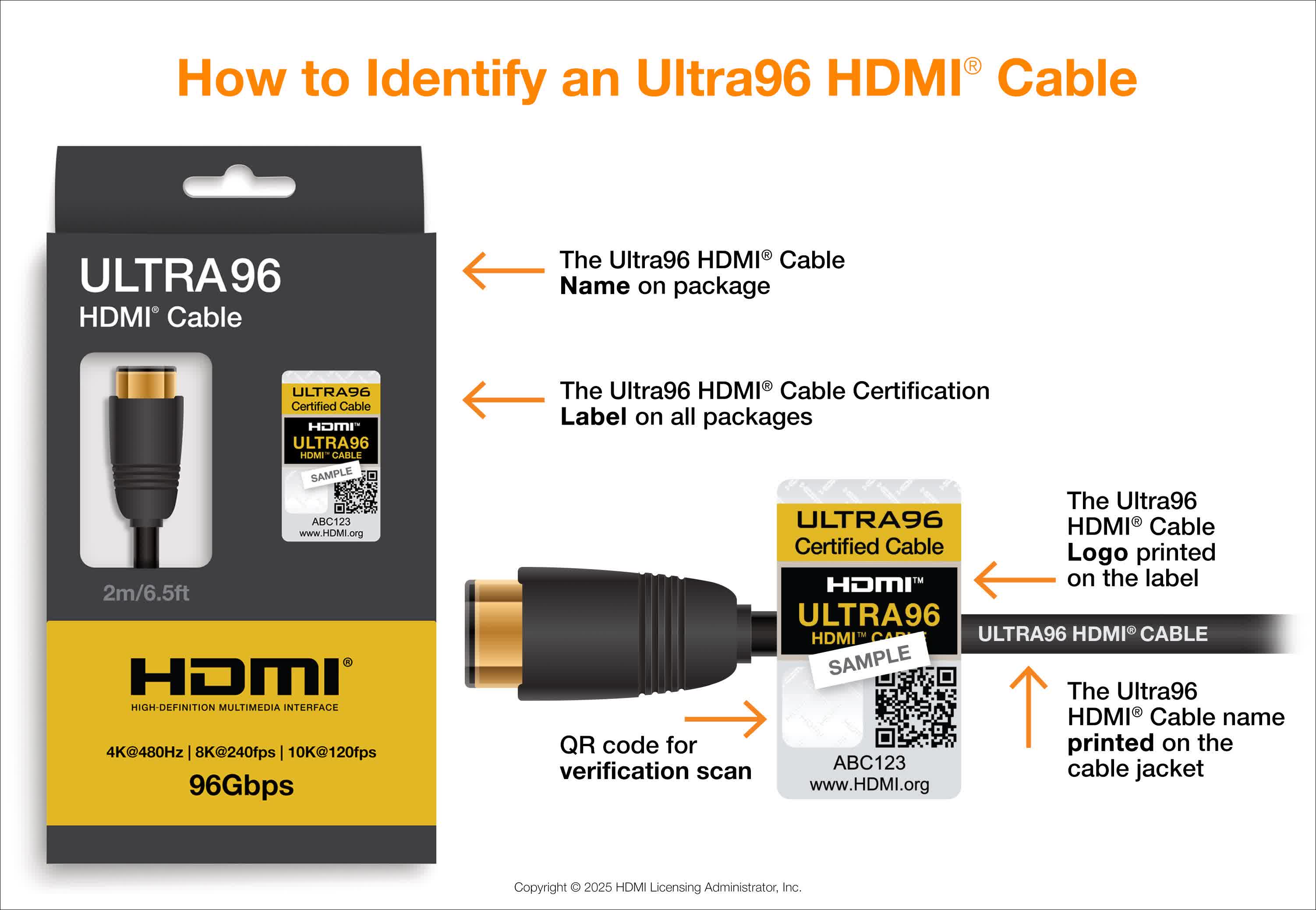What just happened? Following the standard's debut at CES 2025, HDMI 2.2 has now been finalized by the HDMI Forum. The full spec confirms much of what we heard six months ago, including doubling the maximum bandwidth of HDMI 2.1 to 96 Gbps – more than DisplayPort.
While using HDMI 2.2 does not require a new connector, taking advantage of all its best features requires a new Ultra96 cable – a reference to its maximum bandwidth. 96Gbps is double the 48Gbps max bandwidth of HDMI 2.1 and is more than the 80Gbps supported by DisplayPort 2.1.
That amount of bandwidth will allow for some monstrous resolution and refresh rate combinations, including 4K at up to 240Hz and 8K at up to 60Hz in 4:4:4 format at up to 12-bit color depth. It also supports 12K@120Hz and 16K@60Hz with DSC (Display Stream Compression).
Following the issue of HDMI 2.1-branded cables not meeting the standard's spec, the Ultra96 cables themselves will clearly be labeled with the name, and manufacturers will be required to test each one individually. The cables will also be certified by the HDMI Forum.
Buyers of an Ultra96 Certified Cable can use the HDMI Forum's labelling program to confirm it's the real thing by scanning the QR code on the box.
HDMI 2.2 also introduces Latency Indication Protocol (LIP). This improves audio and video synchronization, especially for multi-device systems such as those with AV receivers or a soundbar. LIP could be especially useful to those whose systems can't seem to precisely synchronize the dialogue being heard with the actors' mouth movements.
HDMI 2.2 is backward compatible, so the cables will work with anything featuring an older HDMI port.
The first HDMI 2.2 devices are expected to arrive during the final quarter of 2025. AMD is rumored to support the standard in the next Radeon UDNA GPUs, though they might be limited to a maximum of 80Gbps, according to prolific leaker Kepler.
HDMI2.2 64G and 80G 🧐
– Kepler (@Kepler_L2) June 19, 2025
The gap between HDMI 2.1 and the first supported TVs was about 2 years, and it took around four years before the standard gained widespread adoption.



